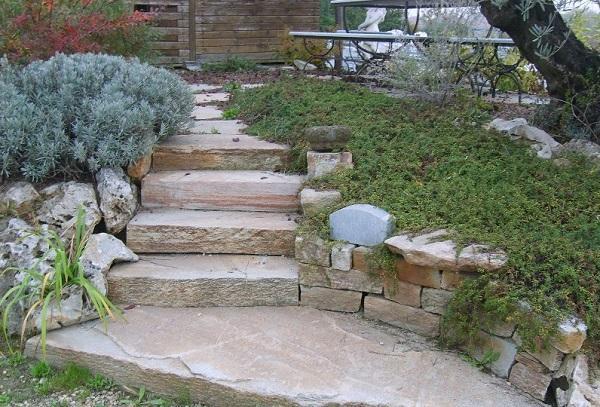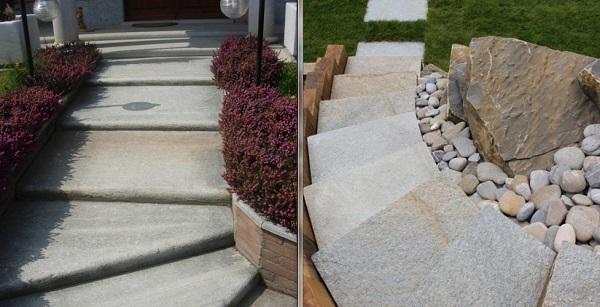Lucerne stone
Post from EditorialsThe Luserna stone is a material which is used both for the construction of buildings and for coating the interior and exterior of private homes or public areas.
What is the Luserna Stone?
The Luserna stone is a typical material native of the foothills of the central and western Cozie Prealps in the Piemonte region where it is extracted. To be precise the places correspond to the areas between the Po Valley and Pellice Valley, including various municipalities: Bagnolo Piemonte, Barge, Rorà and Luserna San Giovanni, from which it takes its name.
It is a type of metamorphic rock group of gneiss and it has always been one of the jewels of Piedmont productive reality in general. It is present as a building material in the whole Piedmont region and it has reached levels of popularity all over the country and even internationally.
It is used both for the construction of buildings and for the coating of spaces and furnishings in the inside and outside of private homes and public urban areas. It ranked as metamorphic rock with schistosity, since it tends to fall apart in planes parallel to each other, even if the membership of the rock type gneiss indicates a structure consisting of crystals immersed in a fund more homogeneous (so-called augen structure).
The characteristic light gray color with shades of green is the result of the composition of this type of stone: quartz, feldspar and mica white and green.
Using the Luserna Stone: some history
The Luserna Stone, as we have seen, has been used since ancient times as a building material in various fields. As well as in the funeral building, in the most common situations we find it as machining blocks for urban flooring or building elements such as balcony slabs, steps, thresholds, lintels and covers.
You can admire the decorative effect in historical accomplishments of Piedmont as external floors of the buildings Venaria Reale and Racconigi as well as coverage of the Mole Antonelliana. In the latter case the main intention was to give more support to the building of masonry, the highest of the time, using slabs of Pietra Luserna along with bricks.
In more recent times, which is the last century, the Luserna Stone was practically the most common material used for the construction of nearly all the sidewalks and stairs of Turin. With the use of new machinery for mining and processing (sawing frame and diamond disc) you have achieved production levels such as to allow the export abroad.
Using the Luserna Stone today, types and sizes
Among the companies currently working this type of stone is the Piedmont DOC of Piccato Mauro, born in 1978 for the manufacture and laying of stones in general and the Luserna Stone in particular, supplied in different sizes and types of product depending on the intended use.
They are therefore in production: straight or curved curbs, cubes, plates for balconies, stairs and window sills, lose for roofs, bricks, stones for the construction of stone walls and flower beds, support brackets for balconies, paths and mosaic floors, slabs and squares for external paving.
The curbs are straight or curved high 20-25 cm and are used for the edges of sidewalks and flower beds. The most common color is mixed with gray or yellow-pink veins and shadows, while the exposed face is blaze.
The cubes are produced in four different formats depending on the size, they are laid with sand and cement and subsequently grouted with grout. The final appearance is not linear and this type of flooring can be realized in every situation of slope and climate, as, for example, during the winter, there are no problems in the case of salt spraying for ice or snow.
The roofs slabs can be semiregular (for the roofs in the Aosta Valley), of all sizes (plates are finished by hand at a right angle) or square-defined measurements (80x80, 90x90 and 100x100).
The bricks are used to build and put on walls and walls both inside and outside (not a frost proof material) and they are gray, gray mixed pink or yellow. In particular, the binders are like bricks used for flooring beading and flower beds or inserts in the same flooring.
The Luserna stone is used since ancient times, and continues to be to this day, even to build retaining walls and terraces not needing special foundations as it is laid dry. The rustic appearance makes this material ideal for the construction of paths and support walls in terraced gardens or entrances to houses in the countryside.
Also the Luserna Stone mosaic is very popular to create floors, walkways in gardens or backyards. The pose is dry on coarse sand and grass is sown between one element and another.
Lucerne stone quarries Piedmont processing and sale
It dates back to the early 50 the start of mining of Luserna Stone from the Piedmontese family Gontero that, over the years, has implemented the activity dealing not only with its extraction but also with the processing and sale of products.
The quarry is always in the Piedmont town of Bagnolo Piemonte and Cave Gontero SRL is certified according to UNI EN ISO 9001: 2008 since 2008 for the mining, production and marketing of ornamental.
The range of products available is extensive and goes from opus to ashlar, from big squared pieces for the floor to losette for roofing, veneers blocks from the antique cubes, and more, to meet every need.
Is based in Bagnolo Piemonte also the company Vottero Riccardo & C, by three generations benchmark in this area. The company's offer is wide both as regards the semi-finished and the finished products.
The technical details of extraction are in the vanguard, relying on the combined use of the diamond wire cutting and expanding mortar. This provides a better quality of the extracted material thanks to the greater retention of integrity, with respect to the extractive mode that uses the explosive charges.
79870 REGISTERED USERS










